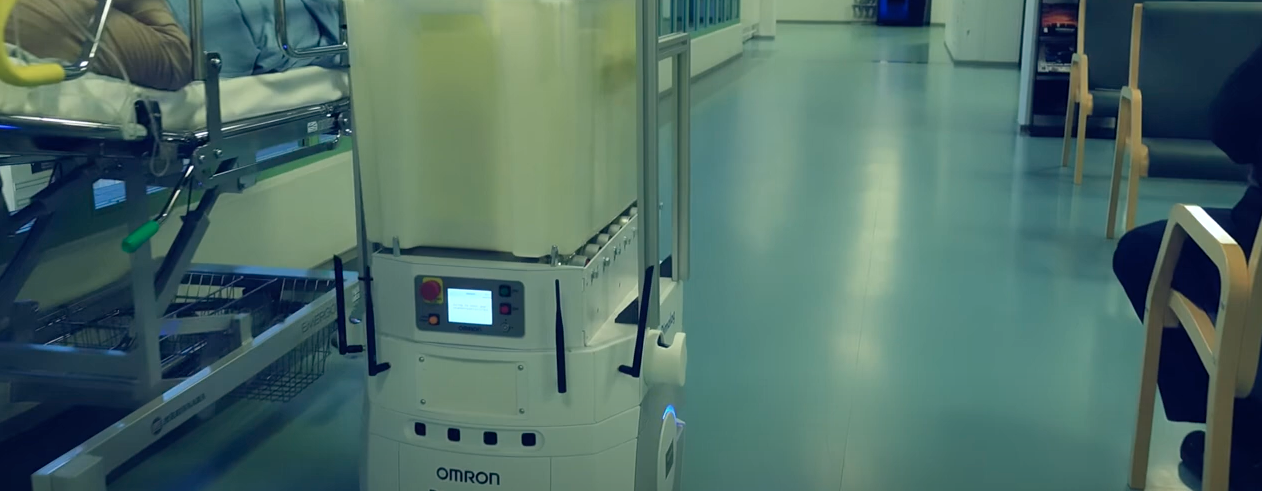In today’s healthcare landscape, technology and medicine are closely linked. When one thinks of leading technological advancements in the medical sector, robotic-assisted surgeries or gene editing might come to mind. Yet, some of the most impactful innovations are more pervasive and subtle, working behind the scenes. Autonomous Mobile Robots (AMRs) and Collaborative Robots (Cobots) are transforming healthcare by automating routine tasks and improving efficiency and safety.
The Emergence of Autonomous Mobile Robots in Healthcare
Initially rooted in manufacturing, AMRs have transitioned into healthcare by addressing tasks that are repetitive, time-consuming, and error-prone. Modern technological strides have enhanced the adaptability of robots in intricate spaces like hospitals, fostering better human-machine collaboration. Their adaptability and precision, enhanced by advanced sensors and AI capabilities, allow for efficient material management and improved patient care activities.
AMRs can redefine hospital efficiency. Whether it’s shifting materials, assisting in lab work, or disinfecting areas, AMRs bring a blend of precision and timeliness. They seamlessly mesh with existing material management systems, minimising the manual load on healthcare staff. The promise of AMRs lies not just in inefficient handling but also in their potential to revolutionise sterile instrument delivery and task delegation within medical establishments.
The Benefits of Cobots in Healthcare
The integration of robotics in healthcare isn’t just about operational efficiency. It’s a holistic approach that aligns with the primary objective of healthcare: patient well-being. As robots shoulder routine tasks, healthcare workers can channel their expertise and time towards more patient-focused activities.
Cost Efficiency
The long-term costs associated with manual repetitive tasks are considerable. Not just in terms of human labour but also in the potential for errors that could have significant consequences in a medical setting. AMRs and Cobots offer a one-time investment that, over time, can lead to substantial cost savings.
Human Resource Allocation
Hospitals currently rely extensively on manual labour for material management. This not only consumes valuable resources but also raises the risk of human errors. Studies indicate that nearly 40% of nursing duties are not directly related to patient care. Delegating these responsibilities to robots could markedly enhance the quality of care and enable healthcare staff to dedicate more time to patient interaction.
Existing material management systems in hospitals face challenges with mobility, especially in navigating the crucial final 50 meters to a patient’s bedside. Autonomous Mobile Robots present a solution to this issue. Their ease of access, combined with AI-driven decision-making, improves both the speed and precision with which they execute tasks.
AMRs and Cobots differ from traditional robots in their reprogramming flexibility. They can be adapted for various functions, making them highly versatile and capable of meeting the evolving needs of a hospital setting.
Automating routine tasks allows the redirection of human labour towards more intricate and meaningful roles. This not only boosts workforce efficiency but also increases job satisfaction, as employees can concentrate on tasks that necessitate a human touch and discernment.
Safety and Precision
In a world that has faced the brunt of pandemics, the significance of hygiene and safety cannot be overstated. AMRs in healthcare facilities reduce human exposure to pathogens and enhance safety. OMRON’s state-of-the-art AMRs and Cobots, equipped with advanced sensors and AI-guidance systems, ensure safe and precise operations, from disinfecting rooms to handling medical supplies in high-risk zones.
The automation of medicine distribution using robots means fewer errors and increased efficiency. They not only ensure accuracy but also relieve healthcare workers from manual and repetitive tasks, enabling them to focus on patient care. This shift, combined with advancements in AI and IoT, makes way for a future where robotics doesn’t replace but assists healthcare professionals and makes the entire ecosystem more patient-centric.
Bridging the Integration Gap
While technology manufacturers like OMRON offer robust robotic solutions, the magic truly happens when these Cobots are seamlessly integrated into the hospital’s existing operational architecture. That’s where COREMATIC’s expertise becomes invaluable.
COREMATIC, with its deep-rooted knowledge in computer vision, machine learning and robotics, understands the complexities of robot-human collaboration in a sensitive setting like healthcare. Our team of engineers and consultants work closely with medical professionals to ensure that the AMRs and Cobots are tailored to specific hospital needs. Our full-service approach, encompassing consulting, engineering, and commissioning, ensures that the integration is smooth, efficient, and in line with the healthcare facility’s objectives.
Looking Ahead
The integration of AMRs and Cobots in the medical sector is more than just the next step in technological advancement. It represents a shift in how we view healthcare delivery – prioritising safety, efficiency, and human value. As these robotic systems become more ubiquitous, the role of specialised integrators like COREMATIC will become even more crucial.
To truly harness the potential of these robotic solutions, stakeholders in the medical innovation government sector must understand and appreciate the transformative potential of this synergy between technology providers like OMRON and integration experts like COREMATIC. Only then can we usher in a new era of healthcare delivery, one where technology and human expertise combine to create unparalleled patient care standards.

